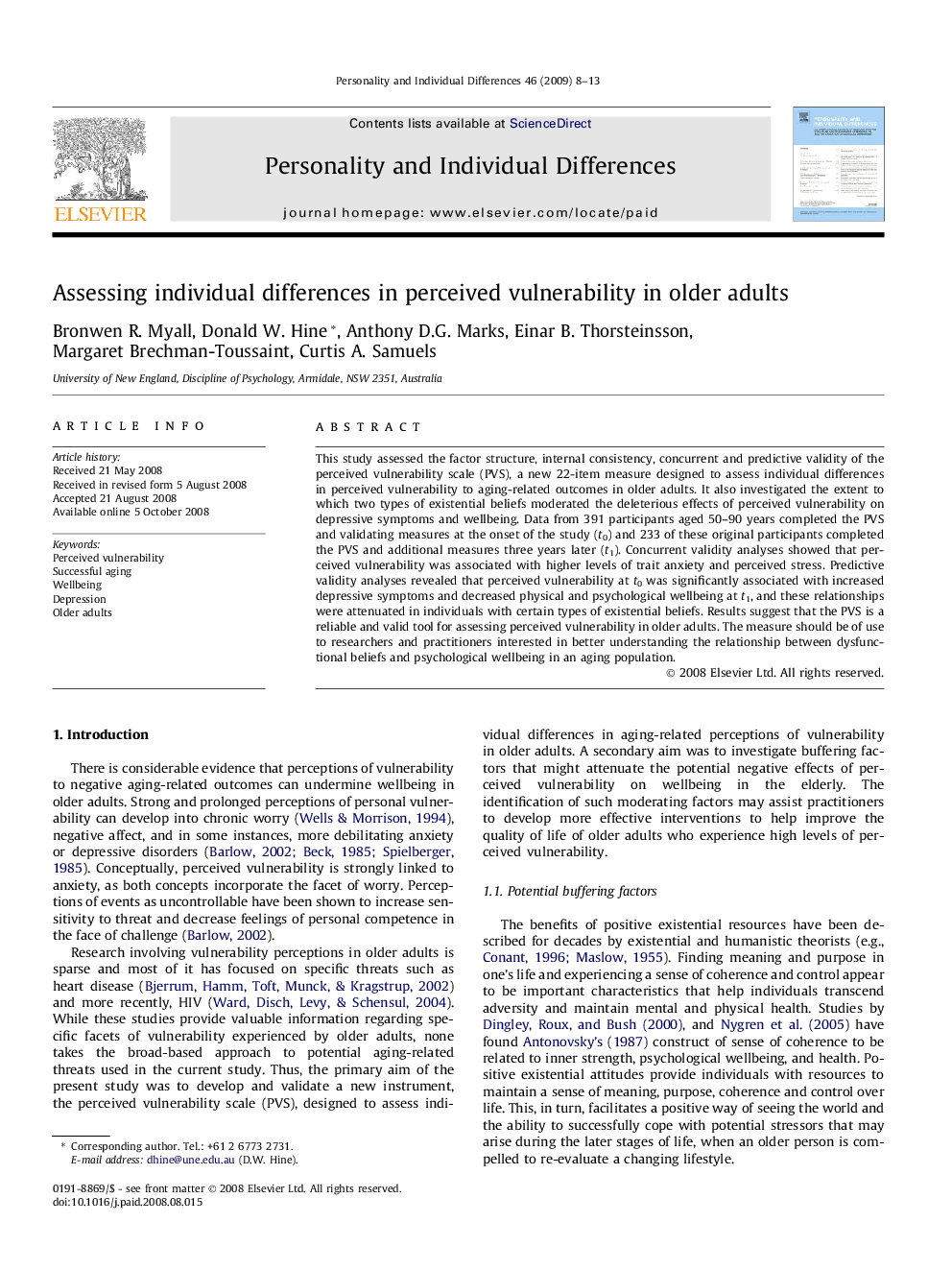| کد مقاله | کد نشریه | سال انتشار | مقاله انگلیسی | نسخه تمام متن |
|---|---|---|---|---|
| 892686 | 914093 | 2009 | 6 صفحه PDF | دانلود رایگان |

This study assessed the factor structure, internal consistency, concurrent and predictive validity of the perceived vulnerability scale (PVS), a new 22-item measure designed to assess individual differences in perceived vulnerability to aging-related outcomes in older adults. It also investigated the extent to which two types of existential beliefs moderated the deleterious effects of perceived vulnerability on depressive symptoms and wellbeing. Data from 391 participants aged 50–90 years completed the PVS and validating measures at the onset of the study (t0) and 233 of these original participants completed the PVS and additional measures three years later (t1). Concurrent validity analyses showed that perceived vulnerability was associated with higher levels of trait anxiety and perceived stress. Predictive validity analyses revealed that perceived vulnerability at t0 was significantly associated with increased depressive symptoms and decreased physical and psychological wellbeing at t1, and these relationships were attenuated in individuals with certain types of existential beliefs. Results suggest that the PVS is a reliable and valid tool for assessing perceived vulnerability in older adults. The measure should be of use to researchers and practitioners interested in better understanding the relationship between dysfunctional beliefs and psychological wellbeing in an aging population.
Journal: Personality and Individual Differences - Volume 46, Issue 1, January 2009, Pages 8–13